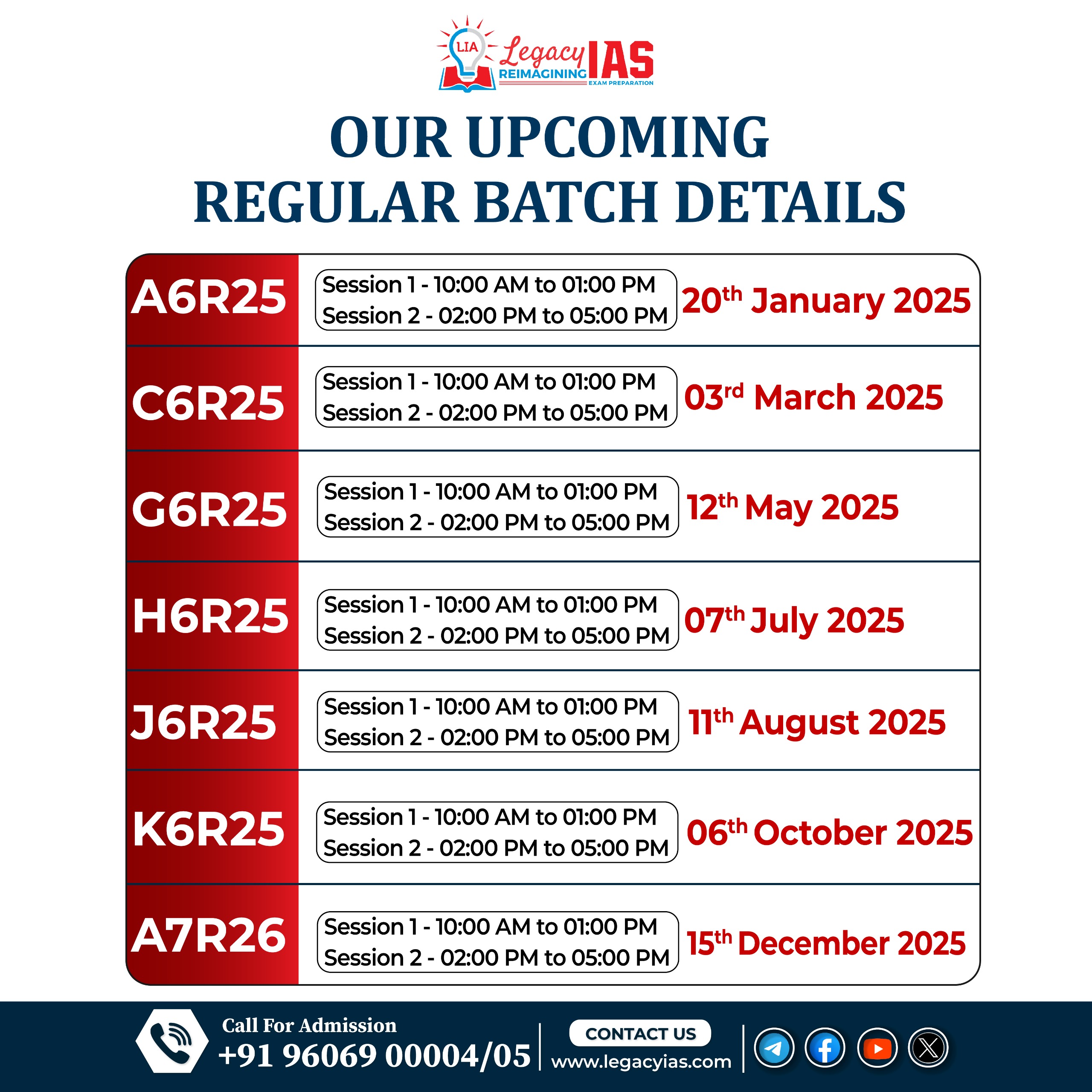Content:
- India holds fire as Trump slaps tariffs
- Should India reduce tariffs given the U.S.’s moves?
- Why are undersea cables important?
- Compassion in primary healthcare: here’s what it looks like in India
- Live or leave? Delhi’s contaminated air, food squeeze out a hefty price from migrants
India holds fire as Trump slaps tariffs
Overview of the U.S. Tariff Move
- President Trump imposed reciprocal tariffs ranging from 10% to 49% on imports from various trading partners.
- India-specific tariff: A 27% tariff has been levied on Indian exports to the U.S., despite ongoing bilateral trade negotiations.
- The tariffs take effect in two phases:
- 10% baseline tariff on all countries from April 5.
- Higher reciprocal tariffs (like India’s 27%) from April 9.
Relevance : GS 2(International Relations) , GS 3(Economy)
Legal Justification and Intent
- Trump invoked the International Emergency Economic Powers Act (IEEPA), 1977.
- He termed the persistent U.S. trade deficit a “national emergency”.
- Called April 2 “Liberation Day” for U.S. trade.

Impact on Global Markets
- Global shockwaves:
- Japan’s Nikkei: fell 4%
- European markets: fell >2%
- India’s Sensex: down >300 points
- Nifty: also declined
- U.S. Dow Jones: fell 3% in the first hour
- Nasdaq: plunged 4%
India’s Reaction: Muted and Measured
- India’s Commerce Ministry:
- Said it is “examining the implications” of U.S. tariffs.
- Is engaging with stakeholders, exporters, and industry.
- Studying potential opportunities arising from global trade realignments.
- Reaffirmed India’s commitment to a Comprehensive Global Strategic Partnership with the U.S.
- Emphasized the ongoing effort to raise bilateral trade to $500 billion by 2030.
India vs Other Affected Nations
- India’s reaction: Subdued, focused on diplomacy and impact analysis.
- Other countries reacted more strongly:
- EU, China, Canada: Warned of countermeasures.
- Japan, South Korea: Termed the move “regrettable”.
- India appears to be preserving space for negotiations, likely avoiding escalation.
India-U.S. Trade Context
- Trump alleged India imposes up to 52% duties on U.S. goods.
- Despite talks on a Bilateral Trade Agreement (BTA), India still faced tariff imposition.
- India is seeking to deepen trade ties with the U.S., possibly explaining the non-retaliatory stance.
Geopolitical and Economic Implications
- The tariff war could reshape global trade alignments.
- Possibility of India capitalizing on shifting supply chains.
- May provide India an opening in markets vacated by retaliatory actions against the U.S.
Should India reduce tariffs given the U.S.’s moves?
Context:
- The U.S., under President Trump, has imposed reciprocal tariffs on multiple countries, including India.
- India has responded by reducing tariffs on select U.S. goods and exploring a bilateral trade agreement.
- The debate centers on whether India should further reduce tariffs in response to U.S. pressure.
Relevance : GS 2(International Relations ), GS 3(Economy)
Economic Consensus on Tariffs:
- Lower tariffs are generally seen as beneficial for economic growth and efficiency.
- Tariffs distort resource allocation and reduce global competitiveness.
- Uniform and low tariff structures help improve production and consumption efficiency.
Consumers vs. Producers:
- High tariffs protect inefficient producers but penalize consumers through higher prices.
- Efficient production should be prioritized — if a domestic firm can’t compete globally, resources should shift to sectors where India has a comparative advantage.
- High tariffs contradict the spirit of economic efficiency and global integration.
U.S. Strategy – Bargaining or Protectionism?
- U.S. tariff hikes appear to be a bargaining tool to lower global trade barriers.
- However, country-specific rules and non-uniform tariff negotiations can destabilize global trade structures.
- While such pressure may have short-term gains, it also introduces uncertainty and disrupts global supply chains.
WTO and Global Trade Governance:
- The WTO is increasingly seen as dysfunctional, limiting its role in enforcing global trade norms.
- The U.S. bypassing multilateral institutions reflects frustration with global trade deadlocks.
- India has also often resisted global trade liberalization at WTO platforms.
Non-Tariff Barriers (NTBs):
- NTBs are more pervasive and opaque than tariffs — including quality standards, regulatory hurdles, and procedural delays.
- These barriers exist both in India and globally, affecting importers and exporters alike.
- NTBs can sometimes be disguised protectionism and are harder to negotiate or quantify.
What Should India Do?
- Yes, reduce tariffs — but gradually and predictably to allow industry adjustment.
- Follow a transparent timeline for tariff reduction to improve investor confidence.
- Complement tariff reduction with trade agreements with the U.S., EU, UK, Japan, etc.
- Move toward comprehensive trade liberalisation to boost competitiveness and attract investment.
Conclusion:
- While U.S. tariff aggression raises global uncertainties, India should not react defensively.
- A strategic and phased reduction of tariffs, along with simplification of NTBs and trade diversification, can transform India’s trade architecture.
- India should focus on long-term economic efficiency, not short-term protectionism.
Why are undersea cables important?
What are Undersea Cables?
- Definition: Fiber optic cables laid on the seabed to transmit internet and telecom data across continents.
- Composition: A few inches thick, armored for underwater durability, containing high-capacity fiber strands.
- Usage: Carry ~90% of global internet data, ~80% of world trade, and enable $10 trillion in financial transactions.
- Landing Points: Terminate at coastal manholes and extend inland to connect to telecom networks.
Relevance : GS 3(Infrastructure, Science & Tech, Cybersecurity)
Global Connectivity via Undersea Cables
- Global Web: Around 600 undersea cables interconnect the internet worldwide (Goldman Sachs).
- Trade & Strategy: Routes often mirror historical trade routes for ease of cable-laying logistics.
- Bandwidth Boom: New systems like 2Africa Pearls (Meta-backed) are adding terabit-scale capacities globally.
India’s Subsea Cable Ecosystem
- International Cable Systems: 17 cables land in India (mostly in Mumbai and Chennai).
- 95% of traffic lands in a 6-km stretch in Versova, Mumbai.
- Domestic Systems:
- CANI (Chennai-Andaman-Nicobar Islands)
- Kochi-Lakshadweep project
- New Arrivals:
- SEA-ME-WE 6
- 2Africa Pearls (adds 100 Tbps capacity)
Challenges & Vulnerabilities
- Underdeveloped Network:
- India has only 1–3% of global cable landings.
- Fewer cables than Singapore, increasing risk of disruption.
- Red Sea Disruptions:
- Houthi rebel attacks in Bab-el-Mandeb strait have damaged cables.
- Disruption risk: ~25% of India’s internet traffic could be affected.
- Domestic Threats:
- Fishing trawlers frequently damage cables near coasts.
- No domestic cable repair ships or storage depots.
- Dependence on foreign repair vessels slows response time.
- Regulatory Bottlenecks:
- ~51 separate clearances needed from multiple agencies to lay cables.
- Delays in project execution and increase in capital costs.
Steps to Strengthen Infrastructure
- Regulatory Reforms:
- Single-window clearance mechanism to ease cable landing permissions.
- Diversify Landing Sites:
- Reduce over–reliance on Mumbai and Chennai.
- Develop new hubs along the east and west coasts.
- Build Domestic Capacity:
- Invest in Indian repair ships and cable storage facilities.
- Set up dedicated maintenance bases.
- International Partnerships:
- Collaborate with global tech firms (Meta, Google, etc.) for new cable systems and route diversity.
Key Takeaways
- Undersea cables are critical digital infrastructure, essential for economic, communication, and strategic resilience.
- India’s limited capacity and geographic concentration make it highly vulnerable to disruptions.
- Urgent need for policy simplification, redundancy creation, and domestic capability enhancement to secure India’s digital future.
Compassion in primary healthcare: here’s what it looks like in India
Context and Significance
- WHO’s January 2024 report highlighted compassion as a transformative force in primary healthcare (PHC).
- Compassion includes awareness, empathy, and action, and is key to quality care and system transformation.
- In India’s vast but often overstretched PHC system, incorporating compassion can significantly improve patient outcomes and trust.
Relevance : GS 2(Social Issues ,Health)
India’s Primary Healthcare Structure
- Sub-Centres (SCs): Serve 3,000–5,000 people.
- Primary Health Centres (PHCs): Serve 20,000–30,000 people.
- Community Health Centres (CHCs): Serve 80,000–120,000 people.
- Total: ~1.6 lakh SCs, 26,636 PHCs, 6,155 CHCs (National Health Mission).
Case Study 1: Clinical Courage in Rural Rajasthan (Amrit Clinics, BHS)
- Dr. Vidith Panchal treated a 22-year-old TB patient, Tukaram, in a remote tribal PHC.
- Tukaram had failed treatment across 3 states; weighed only 23kg and had relapsed twice.
- Instead of referral, Dr. Panchal chose palliative, community-based care, reducing physical and financial burden.
- Termed “clinical courage” — prioritising patient dignity over system defaults.
- Barriers to compassionate care: Overloaded PHC doctors managing 40+ national programs.
- Outcome: Amrit Clinics saw footfall increase from 40,000 (2021) to 51,930 (2024).
- BHS Model: Emphasises staff dignity → better morale → more respectful patient care.
Case Study 2: Addressing Violence in Gujarat through ASHAs
- Praveena Ben, an ASHA in Gujarat, trained by SWATI NGO to support violence survivors.
- Used her routine visits to discreetly identify domestic violence cases and refer survivors.
- Referral system: From ASHA → Sub-centre counselling → Direct referral to district hospitals (bypassing PHCs).
- Protects survivor identity (PHCs are community-staffed, risking exposure).
- Culturally sensitive, trust-based approach improved survivor outreach.
- Since 2012, SWATI has worked with 400+ ASHAs and counsellors.
- Recommendation: Embed gender-sensitive, trauma-informed care into PHC protocols.
Case Study 3: Disaster Preparedness in Tamil Nadu
- Compared with Odisha/West Bengal, TN’s PHC system is better integrated in disaster response.
- Annual epidemic training equips health workers for sanitation, outbreak control, and coordination.
- Example: 2004 Tsunami response — swift corpse disposal, sanitation in shelters, food safety.
- Tamil Nadu’s governance model:
- Defined roles via Chennai Municipal Corporation Act.
- Annual district-level planning meetings.
- Strong coordination among technical staff, line departments, and elected bodies.
- In contrast, other states show fragmented responsibility and poor inter-departmental collaboration.
Key Takeaways and Lessons
- Compassion strengthens system responsiveness, especially in crises or vulnerable settings.
- Trust-based human relationships are foundational for quality care.
- Compassionate care includes:
- Home visits
- Respecting patient context
- Minimising stigma (e.g., in abuse or TB)
- Supporting overburdened staff (ASHAs, ANMs)
- Structural support + empathetic delivery = resilient primary healthcare system.
Policy Implications and Recommendations
- Invest in training for compassion and trauma-informed care.
- Recognise and reward compassionate health workers (like ASHAs, PHC doctors).
- Formalise inter-agency coordination (Tamil Nadu model) for public health disaster preparedness.
- Address workforce dignity as a system-level priority for sustained motivation and care quality.
- Scale community-based models like BHS, SWATI for wider reach.
Live or leave? Delhi’s contaminated air, food squeeze out a hefty price from migrants
Core Issue
- Delhi’s air, water, and food pollution is triggering a health crisis—especially allergies—among migrants, students, and lower-income groups.
- The cost of detection and treatment for these pollution-induced illnesses is financially crippling, making survival in the city a dilemma: Live or Leave?
Relevance : GS 2(Governance, Welfare Policies, and Vulnerable Sections)
Health Impact
- Air Quality Index (AQI): Constantly fluctuates between very poor to severe, due to:
- Vehicular emissions
- Construction and industrial activities
- Common health issues reported:
- Skin conditions: eczema, psoriasis, atopic dermatitis
- Eye allergies: up by 35% as per Dr. Titiyal
- Respiratory allergies, sneezing, rashes
- Irritation from water use (washing, bathing) due to phosphates and chemical-laden Yamuna water
Economic Burden
- Allergy detection tests: ₹4,000 to ₹15,000 in private labs
- Government hospitals offer free tests but involve:
- Long queues
- Loss of daily wages for unskilled/semi-skilled workers
- Treatment: No permanent cure; requires long-term medication
- Migrants already spend heavily on:
- Rent, food, transport, books
- Adding health costs worsens financial strain
Student Impact
- Health issues are interrupting education, especially for students from economically weaker backgrounds.
Worker Impact
- Domestic help, informal workers: Miss workdays for hospital visits or fall sick frequently.
- Loss of productivity/income: Trapped between unaffordable private care and overburdened public facilities.
Social Dilemma
- Urban migration driven by hope for:
- Better education
- Livelihood opportunities
- Quality of life
- In reality: Delhi’s pollution imposes a high health and economic cost
- Raises ethical/policy questions:
- Should individuals bear this burden?
- Where does state accountability lie?
Food and Water Contamination
- Packaged food: Contains preservatives and chemicals
- Fruits/vegetables: Treated with harmful food colouring
- Water: Contaminated with phosphates, detergents, chemicals—aggravates skin issues
Broader Implications
- Environmental degradation → Health crisis → Economic loss
- Migrants and poor urban dwellers are disproportionately affected
- Reflects urban governance failure and public health system strain
Key Takeaway
Delhi, while offering better opportunities, imposes an invisible cost—health damage and financial hardship—forcing many to question whether it’s worth staying.




